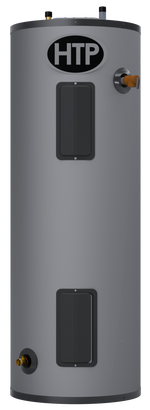Familiarizing yourself with some helpful hot water heater maintenance tips will help you extend the life of your water heater, and save you some money down the road.
Taking a few minutes out of your day, once a year, to check up on your water heater can make a huge difference in your home. Not only does water heater maintenance help extend your water heaters’ life, but it also helps it run safer and much more efficiently.
If you notice that your water doesn’t get as hot as it used to, or that it takes longer than usual to heat up, then these issues might indicate a greater problem with your heater. However, instances like these can be avoided if you try applying these hot water heater maintenance tips - they can save plenty of time, money, and frustration if you’re proactive.
Tips to Extend Water Heater Life
Water heater life expectancy, for both electric and gas models, is typically around a decade. However, you can extend that life expectancy with these tips. Remember that you are dealing with extremely hot water! It is advised to wear heat-resistant gloves and always proceed with caution.
1. Flush your water heater tank
Sediment buildup in your water tank can shorten the lifespan of your hot water heater and cause it to run less efficiently.
- Turn your water heater off. If it is powered by electricity, you will have to flip a power switch. If it is powered by gas, extinguish the pilot light.
- Turn off the cold water inlet
- Attach a garden hose to the hot water valve and run the opposite end outside. The water that drains from the tank will be very hot
- Open the pressure relief valve and then open the drain valve. Allow the tank to drain completely. This will take 20-30 minutes, depending on the size of your water tank
- Open all faucets with the hot water handle and turn the cold water inlet to the tank back on
- When the water stops flowing, close all of the faucets, disconnect the hose, close the pressure and drain valve, and turn the water heater back on.
2. Check the pressure valve
Gas and electric water heaters both have a temperature and pressure relief valve (T&P Valve). It is a safety device that will automatically open if there is ever too much pressure in the tank. If the valve is faulty, too much pressure could build up and the tank could explode.
- Turn off the electricity or extinguish the pilot light. Shut off the cold water inlet.
- Place a large bucket underneath the pressure relief valve to catch water and pull the trip lever.
- You should hear air and/or see steam escape from the valve. If you do not, drain the tank and replace the valve.
- To replace the pressure valve, first take the discharge pipe off and then remove the valve. Measure the stem length and purchase the same exact valve. It may help to bring the valve to the hardware store if you are unsure.
- Use a wrench to screw the new valve into place and then reattach the discharge pipe.
- Turn the water heater back on by reconnecting the electricity or reigniting the pilot light.
3. Adjust the temperature
Your water heater does not need to run at a high temperature if no one is using it. You can save energy and increase your water heater’s lifespan by dialing down the temperature when you leave the house for more than 3-days at a time. In addition, if you realize that your hot water runs too hot, lowering the temperature can be safer, more comfortable, and conserve energy.
- 120 F is the ideal temperature for a water heater.
Replacing Your Water Heater
The above tips will help with extending the life of your water heater, conserving energy, and saving money. However, sometimes a brand new water heater is the only option.
If you find that you must replace your water heater, the Slant Fin Boiler and Noritz Tankless Water Heater are both excellent options and Plumbing Deals offers both at great prices!
Please don’t hesitate to contact us if you have any questions about water heater maintenance or replacing your home’s water heater.




